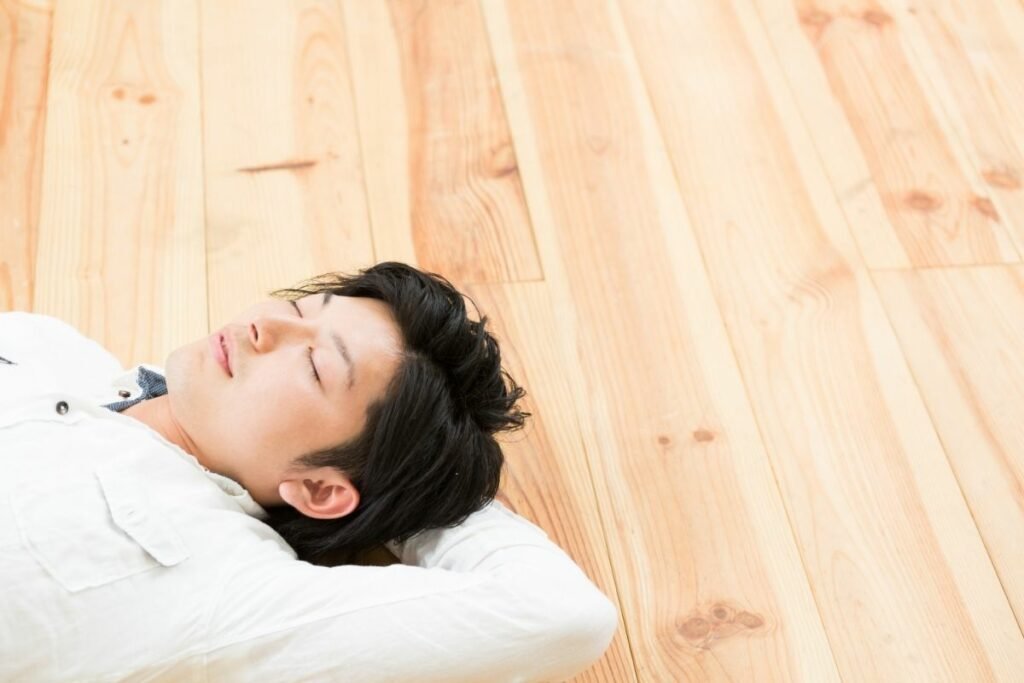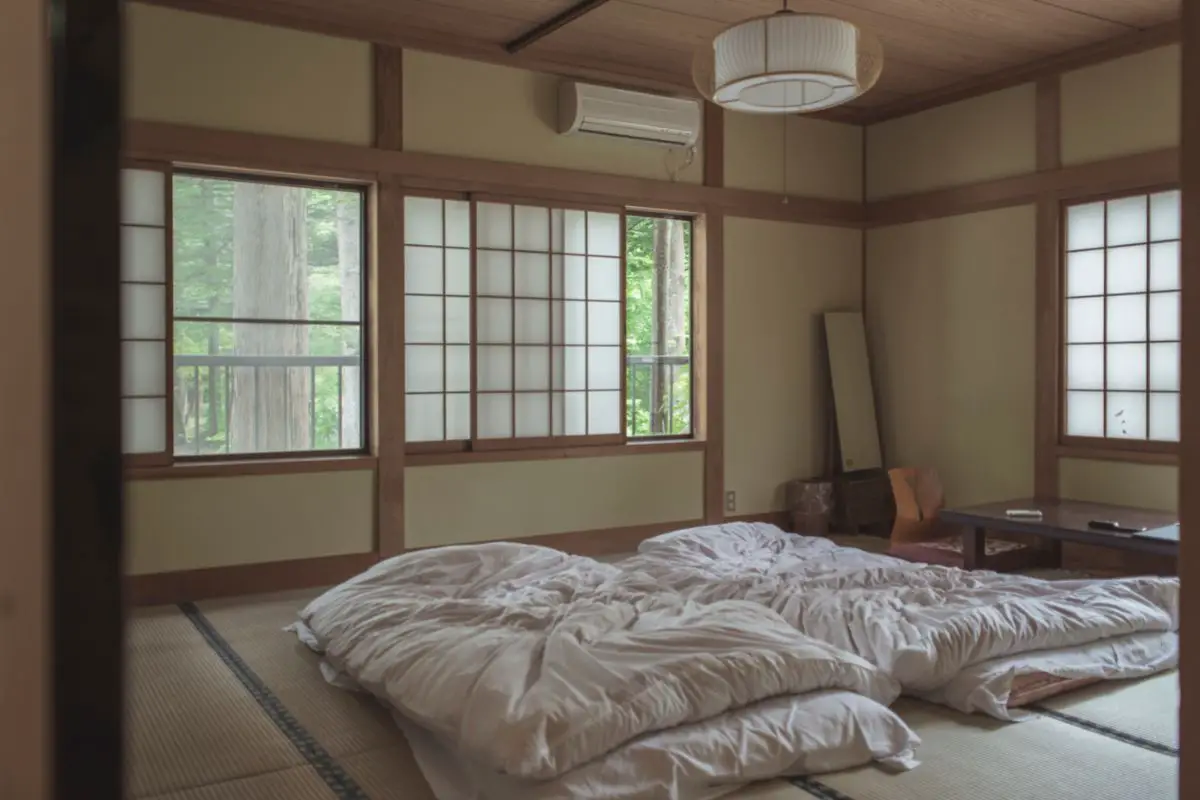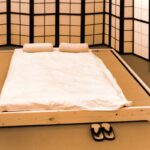Customs around the world are different and some can seem quite strange. One of these long-standing traditions is Japanese people sleeping on the floor.
But is this true? Or is it part of a tradition that has since died out? It can be hard to know what is real and what is fake!
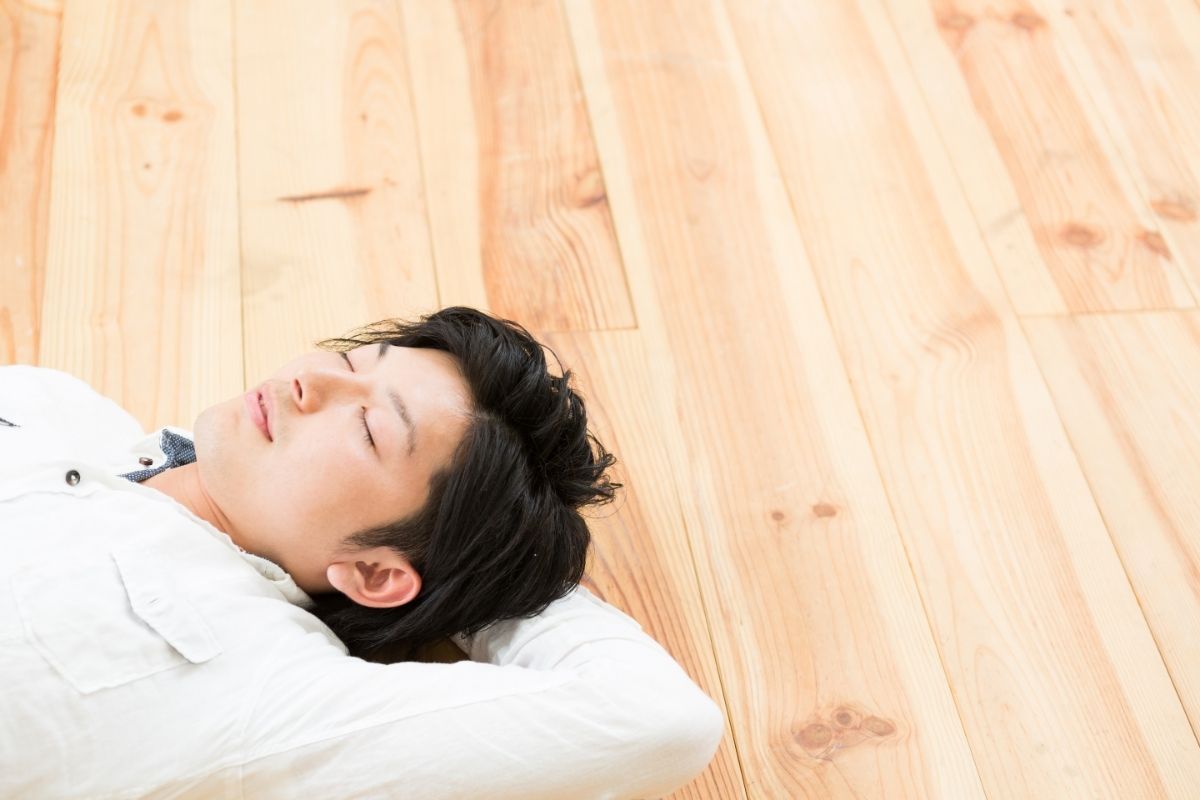
For everyone who is used to a raised bed and bed frame, this might appear odd but there are some great advantages of sleeping on the floor (and it doesn’t even have to be uncomfortable!)
Today we are here to help you siphon the truth from the myth and look at whether Japanese people sleep on the floor and the make-up of a traditional Japanese bed.
The Japanese Bed
The Japanese are well known for their wonderful organizational skills, and their sleeping setup is no different.
Yes, the Japanese do sleep on the floor but on top of an exactly arranged combination of mats and cushions.
The Tatami Mat
At the bottom of every good Japanese bed, you’ll find the tatami mat. Tatamis is used as a base, and they are traditionally filled with rice straw covered with rush grass.
Historically, tatami mats were used as flooring, but today you can find them usually only in so-called tatami rooms which are commonly used for sleeping.
Tatami mats are flexible so you can roll them up when you don’t need them over the day, and roll them out in any space you like at night. This doesn’t have to be in a specific tatami room.
The tatami mat makes the hard floor more comfortable, and at the same time, the mat works as a moisture barrier between the soft futon mattress and the floor.
For this reason, modern tatamis have an in-built moisture-resistant layer.
The Shikifuton
On top of the tatami mat, the Japanese place the shikifuton. This thin mattress is a cotton fill inside a cotton cover.
Just like the tatami mat, you can also roll up the shikifuton and store it while not in use during the day. This means the tatami room or sleeping space can be used for other activities over the day.
The flexibility of the shikifuton also allows it to be aired out and the Japanese often hang their futons in the sun to prevent any mildew or mold.
The Kakefuton
Next up is the kakefuton. This is the traditional Japanese duvet placed on top of the shikifuton.
The kakefuton is normally filled with silk fibers that spread heat evenly and they are also hyper-allergenic giving dust mites no chance to grow.
Buckwheat Hull Pillows
The final part of a traditional Japanese bed is the buckwheat pillow, also called sobakawa.
The filling of these pillows is made up of organic buckwheat hulls, covered with an outer sleeve.
The inner case has a zip that allows you to remove or add buckwheat hulls. This is perfect to adjust the firmness of the pillow to whatever you need.
Another great advantage of buckwheat as pillow filling is that it allows air to circulate throughout the pillow. This keeps the surface cool and helps you sleep more comfortably.
As the buckwheat hulls are organic, they can last for a considerable time, and they can even be removed and stored when the cases need to be washed.
The Benefits Of Japanese Sleeping
While Japanese do not exactly sleep on the floor but are closer to it, the thinner layers and greater firmness can have several great benefits.
Let’s take a look at some benefits, as well as disadvantages of sleeping on the floor Japanese style.
It’s Good For Your Back
Sleeping so close to the floor means you have only a thin layer between the hard floor and your back.
The futons (see also ‘Are Futons Good For Your Back?‘) act like a very firm mattress which can be beneficial for your problem.
Most modern beds are far too soft for our backs and they often sag leaving our backs without support.
A firmer mattress, or sleeping on the floor, won’t sag, and it will give your lower back the right support.
However, you may achieve this effect also easily with a firmer mattress or by using a memory foam mattress.
Therefore, sleeping on the floor isn’t necessarily just because it’s good for your back. This custom is likely a tradition that helped the Japanese in the past to give their back exactly the right support for a good night’s sleep.
Prevent Mold And Mildew
As the Japanese sleep on different layers, it’s easy to roll the futons up and air them out. When this is done regularly, it can prevent mild, mold, and dust mites, and it also makes the bedding smell nicer!
The Disadvantages Of Sleeping On The Floor
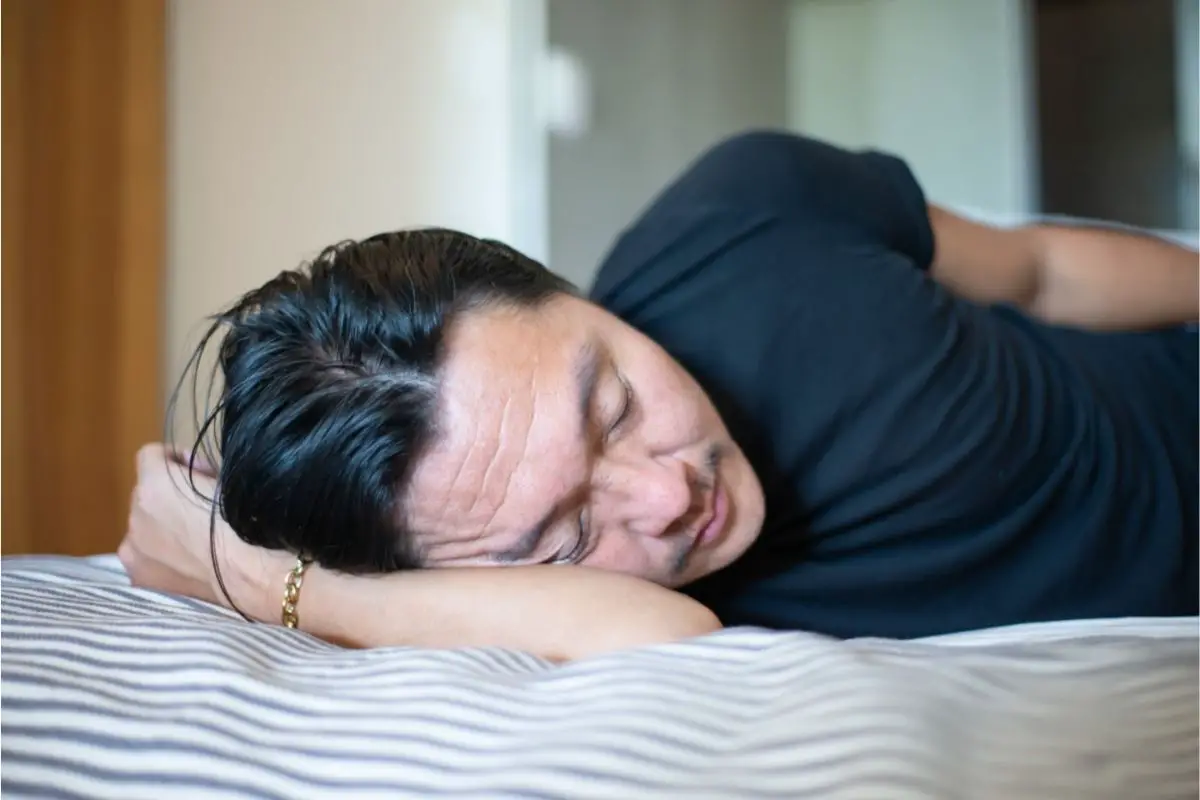
Besides the benefits that sleeping on the floor can offer, there are some clear drawbacks. Let’s take a quick look at these now.
Bugs
Sleeping on the floor means being closer to whatever walks lower on the ground, such as bugs or pets.
Time Consuming
The different layers of the Japanese bed can all be rolled up, stored, or moved elsewhere.
So while you are more flexible on where to sleep, it does take some time to unroll your futons, put the sheets on and make yourself comfortable.
This means you lose at least 20 minutes of your day just to put your bedding away.
No Bedroom Separation
This is depending on preference but some people prefer to have a separate bedroom to help them shut off from the busy day.
As the futons can be rolled up easily, a Japanese sleeping space can be used also for other activities and purposes.
This is a practical and effective way of using space but may feel uncomfortable to some.
Not Comfortable
This one also depends very much on personal preference. Some people might find the firmness uncomfortable, while others prefer sleeping on the floor over a mattress.
Conclusion
While the Japanese do not sleep on the floor, but on a system of futons and cushions, Japanese people also have some other interesting sleeping practices.
For example, Japanese families often share one room by spreading out several large futons in a tatami room. This way, parents and children all sleep together.
Another little-known custom is Inemuri, which is the Japanese tradition for napping whenever, and wherever they like.
This could be at work, in the park, or on the subway. And it’s proven that a quick nap can restore your body energy significantly over the day.
Happy resting!

